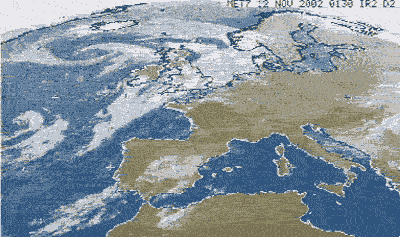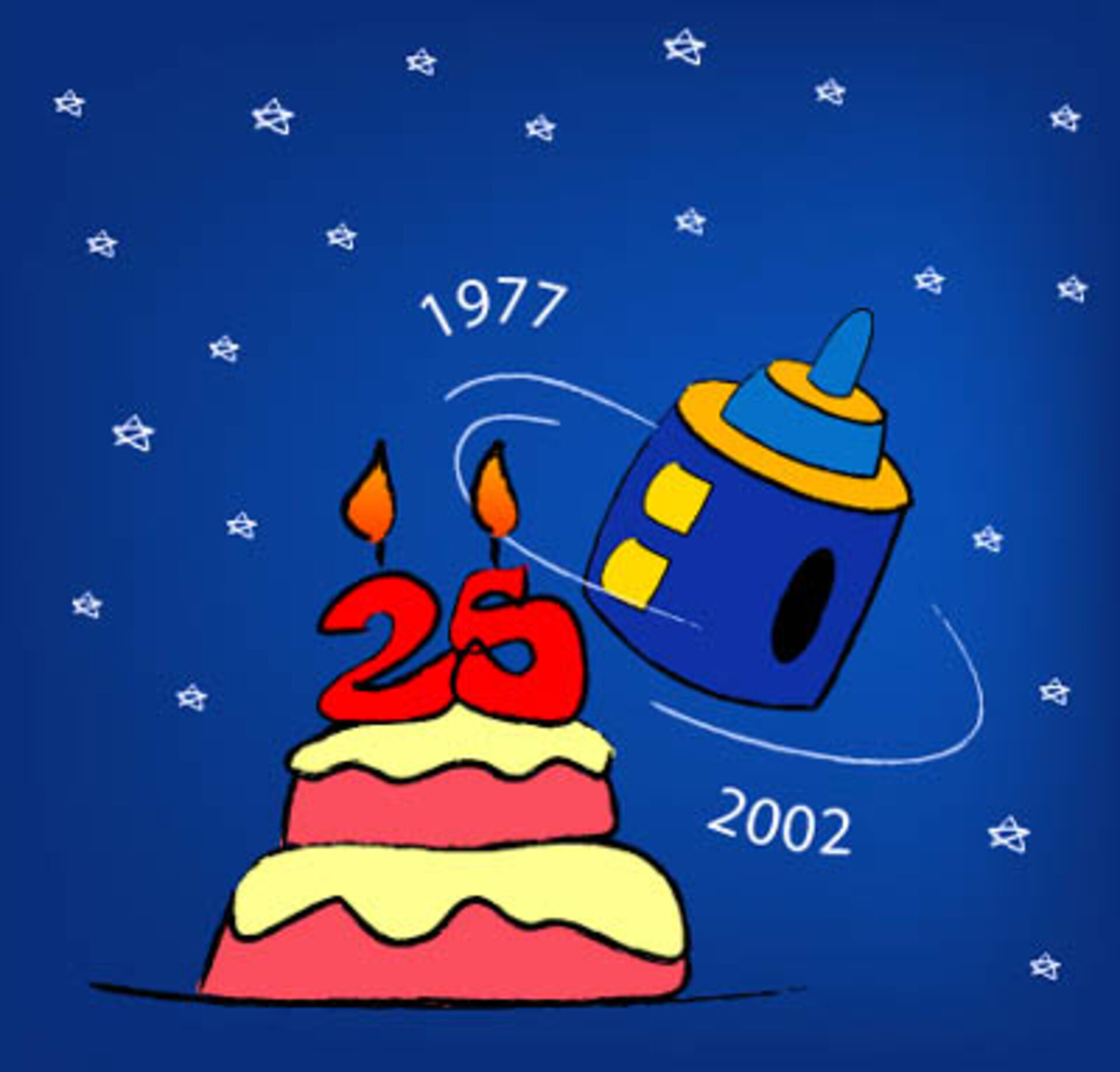25 years of European satellite meteorology -
Happy Birthday, Meteosat!
Since the first one soared into space on 23 November 1977, the Meteosat series of meteorological satellites have been Europe’s watchful eyes on the weather.
The initial image from Meteosat a few weeks after the launch marked the historic first in an uninterrupted flow of information that provided European weather services with an unprecedented, and now indispensable, resource for more accurate forecasts.
The transmission of that image on 9 December 1977 represented another historic milestone for the European Space Agency (ESA), formed as such only two years earlier – its first image of the Earth.
Tillykke med fødselsdagen! Joyeux Anniversaire! Lá breithe mhaith agat! Gratulerer med dagen!

Meteosat-1 was the first of a proud line of six subsequent Meteosat satellites and the current follow-on Meteosat Second Generation (MSG) spacecraft. The heritage passed down by Meteosat-1 also includes ESA’s global Earth observation programme, including the ERS pair of Earth resource-monitoring satellites and, more recently, the Envisat satellite.
The name may not be all that familiar to the man or woman on the street, but Meteosat has been an integral part of European life for the past 25 years.
More than 300 million people across the continent are familiar with the colourful images from Europe’s space sentinels seen every day in weather forecasts on television and in newspapers.
Hartelijk gefeliciteerd! Feliz Aniversário! Grattis pa födelsedagen! Feliz Cumpleaños!
The first three Meteosats were solely funded and developed by ESA, and the Agency has continued to be responsible for the development of Meteosat hardware to the present day. Handling of day-to-day operations was handed over to the European Organisation of Meteorological Satellites (Eumetsat) on 1 December 1995.
Europeans have not been the only people to benefit. Meteosat information has been used to improve weather forecasts over the Middle East and the entire continent of Africa, and the satellites have also played a vital role in contributing to the global network of weather satellites that continuously monitors the globe from geostationary orbit, where they hover above the same spot on the equator over the Gulf of Guinea.
Bonne fête! Hyvaa syntymapaivaa! Alles Gute zum Geburtstag! Buon Compleanno!

After 25 years of impressive service, the Meteosat satellites are giving way to a more advanced series of European meteorological spacecraft - Meteosat Second Generation (MSG). These satellites, the first of which was launched on 29 August 2002, will take images at more wavelengths and at shorter intervals than their parents. The advanced capabilities of MSG satellites make them particularly suitable for short-term forecasting of sudden troublesome weather phenomena, such as snow, thunderstorms and fog. Using MSG data, weather bulletins will be able to advise us with considerable accuracy about whether to take an umbrella or avoid a particular stretch of road because bad weather is expected later in the day!
MSG is a joint project between ESA and Eumetsat, the organisation set up in 1986 to establish, maintain and operate a European system of meteorological satellites. Three satellites are planned at present and a ground segment. ESA is responsible for designing and developing the first satellite, and for procuring the other two on behalf of Eumetsat. Eumetsat is responsible for defining the payload based on user needs, procuring the ground segment and launchers, and operating the system.
While MSG represents the future for European weather forecasting, the 25th anniversary of the first Meteosat launch offers the perfect occasion to reflect on the many benefits to Europeans and others provided by the Meteosat system over the past two-and-a-half decades.




